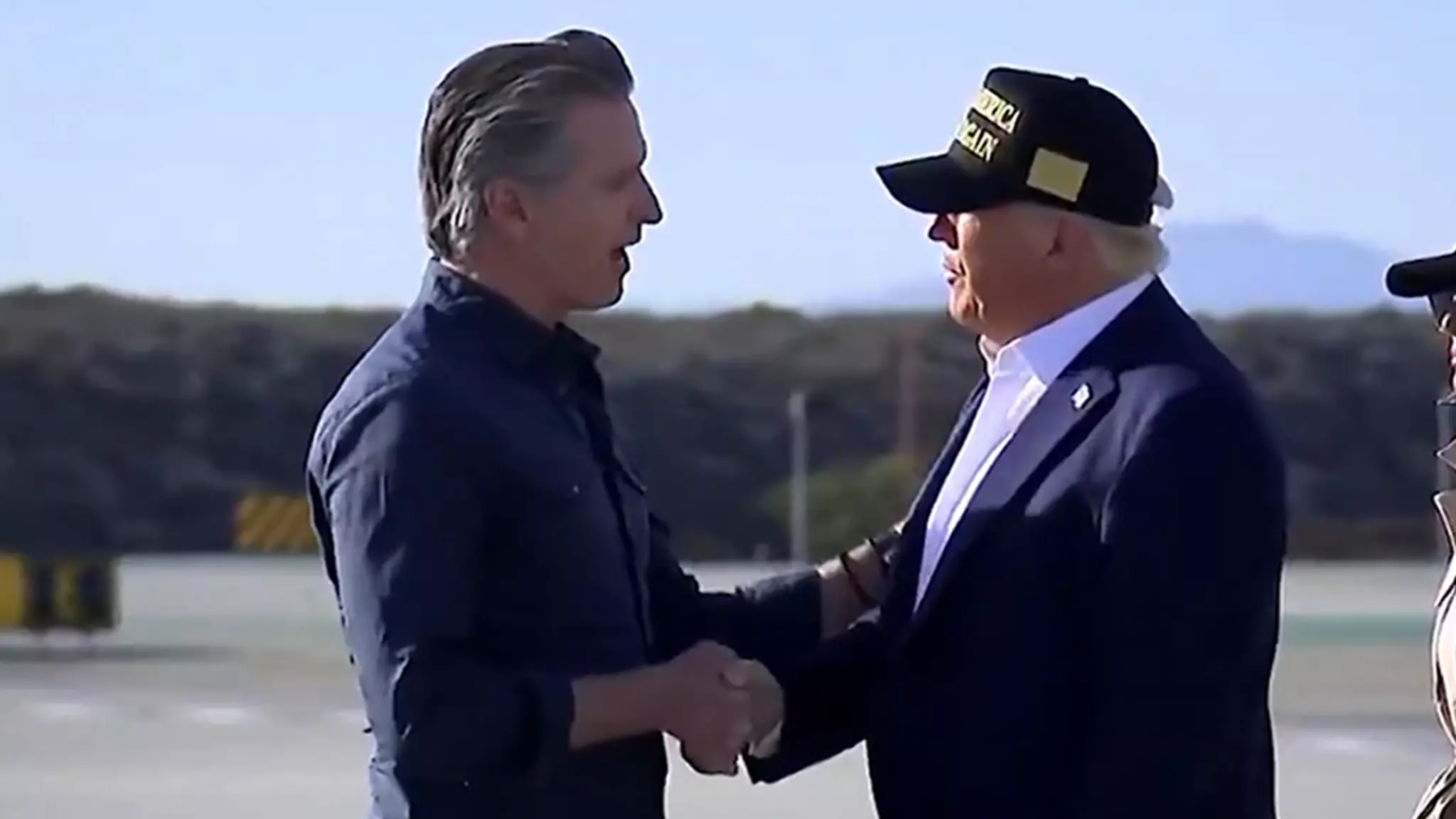In a surprising twist for California politics, President Donald Trump and Governor Gavin Newsom found a brief moment of cordiality amidst the traditionally contentious relationship that defines their political interactions. Arriving at LAX on a Friday, Trump sought to address the urgent crisis posed by the devastating wildfires plaguing parts of the state. The stark reality of the devastation acted as a backdrop for the meeting, emphasizing the need for cooperation in moments of crisis, despite the underlying tensions that have long existed between the two leaders.
The images capturing the moment where Trump and Newsom greeted each other on the tarmac tell a story of political calculus and the necessity for collaboration in times of disaster. Their handshake—an almost playful tug-of-war—symbolized the complicated dance of regional and federal politics. Even amidst the severe challenges facing California, including wildfires exacerbated by climate change and water management debates, the two men exchanged genial pleasantries, showcasing a facade of constitutional camaraderie that many would argue is lacking in today’s political climate.
Gratitude Amidst Discontent
As Trump made verbal commitments for federal assistance, Newsom expressed gratitude, recalling past federal interventions during the COVID-19 pandemic. This exchange suggests an acknowledgment that, despite their ideological disparities, there are moments when political survival necessitates collaboration. Yet, the undercurrents of their history reveal that such interactions may be more a matter of political obligation than genuine goodwill. The narrative surrounding their past interactions—filled with barbed remarks—casts a long shadow over the sincerity of their public engagement.
Political Tensions Underlying Cooperation
However, the wildfires have not fully extinguished tensions between the two leaders. The specter of Trump’s earlier threats to withhold federal disaster relief over governance issues adds an element of apprehension to any cooperative overtures. Newsom’s previous proclamations labeling Trump a threat to democracy contrast sharply with their brief cordiality. Such contradictions highlight the challenges inherent in leading at both the state and national levels, particularly in a climate where bipartisanship often appears elusive.
California has faced significant backlash, with critics directing their ire not only at Trump for his combative approach but also at Newsom and L.A. Mayor Karen Bass in the wake of these disasters. While legislation has been passed in Congress to facilitate emergency responses, the effectiveness of such measures remains in question. The need for decisive action rather than symbolic gestures is paramount for the communities grappling with the dire consequences of climate-induced disasters.
As Trump and Newsom reluctantly engage in a public display of unity, the challenges that California faces, particularly regarding environmental policies and disaster management, require substantial bipartisan collaboration. The moment captured at LAX, while indicative of a fleeting truce, serves as a reminder that overcoming deeply entrenched political rivalries is essential for effective governance in an era marked by crisis. The journey toward reconciliation may be arduous, but the stakes have never been higher for the residents of California and the leadership that serves them.

